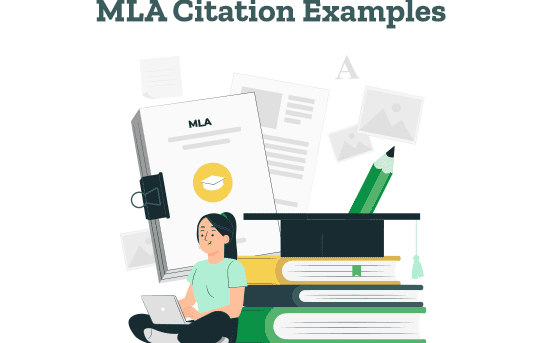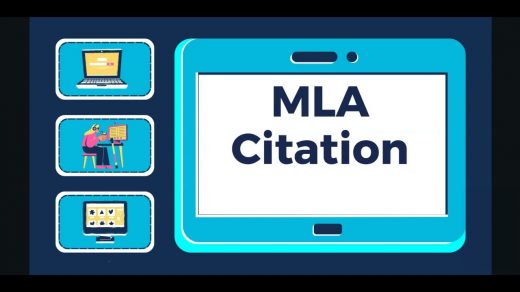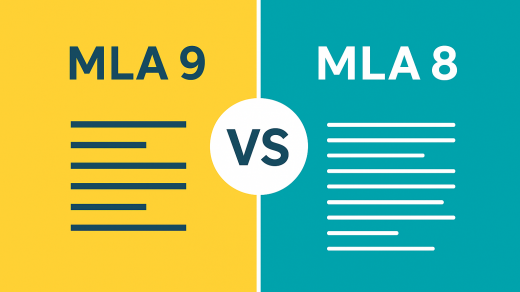Academic writing often involves analyzing not only prose but also conversations, scripts, and dramatic works. Yet when it comes to formatting dialogue—especially from interviews, plays, or screenplays—students often find themselves navigating a gray area. How do you quote multiple speakers? What if an interview has overlapping voices or nested dialogue? And how do you stay true to the conversational tone without breaking MLA’s clean, consistent rules?
This essay provides a comprehensive guide to formatting dialogue, interviews, and dramatic texts in MLA style, with practical examples and explanations that show how to preserve clarity, credibility, and aesthetic consistency in your writing.
Understanding MLA’s Core Principles for Dialogue
MLA format prioritizes readability and uniformity, so even when quoting lively conversation or dramatic dialogue, the goal is to keep the structure visually clean and logically consistent.
Unlike APA or Chicago, MLA does not have a single fixed template for dialogue; instead, it provides general rules that writers adapt depending on whether they are citing prose, a play, a film script, or an interview.
At its core, MLA dialogue formatting follows these principles:
-
Each speaker’s words begin on a new line, indented half an inch from the left margin.
-
Quotation marks are used for short dialogue (usually under four lines) within the same paragraph.
-
Block quotations (no quotation marks) are used for longer exchanges.
-
Speaker identification (the character’s name or the interviewee’s name) should be clear and consistent.
-
Line numbers or act/scene references are required for plays and verse dramas.
This approach helps academic readers focus on the content rather than be distracted by inconsistent or messy formatting.
| Scenario | MLA Rule | Example |
|---|---|---|
| Short Dialogue (Prose) | Use double quotation marks and separate speakers with phrases like he said / she replied | Gatsby turned to Nick and said, “Can’t repeat the past? Why of course you can!” |
| Long Dialogue (Prose) | Indent as a block quotation, omit quotation marks, and include speaker names if needed | Jay: Can’t repeat the past? Nick: Why of course you can. |
| Play or Script | Use the character’s name in all caps, followed by a period. Indent dialogue 0.5 inch. | HAMLET. To be, or not to be—that is the question. |
| Interview Transcript | Use the speaker’s name, bold or italicized (depending on instructor preference), with a colon. | Interviewer: What inspired your first book? Author: A letter I never sent. |
These examples highlight MLA’s central principle: clarity through structure.
Quoting and Citing Dramatic Works
When quoting plays or scripts, MLA format emphasizes both structure and precision. The way you cite depends on whether the play is in verse or prose form and how much dialogue you are quoting.
For short quotations (less than four lines), use quotation marks and incorporate the dialogue into your sentence:
In Hamlet, the prince wonders, “To be, or not to be—that is the question” (3.1.56).
If the quotation extends beyond four lines, format it as a block quotation. Begin the quote on a new line, omit quotation marks, and indent each speaker’s name by 0.5 inch:
For multiple speakers, list each name in capital letters followed by a period. Maintain consistent indentation:
If the play uses acts and scenes, include them in the citation, separated by periods rather than commas:
(Macbeth 2.1.33–35)
If the play has line numbers, cite them as shown. If not, include page numbers instead. The goal is always to guide the reader efficiently to the quoted passage.
In modern screenplays or theatrical scripts, stage directions are often integral to meaning. MLA recommends placing them in parentheses:
You may italicize stage directions only if they appear italicized in the original source.
Formatting Interviews and Conversational Sources
Interviews—whether published, recorded, or personally conducted—present a special challenge in MLA because they blur the line between written and spoken discourse. However, MLA provides flexible options for quoting and structuring them.
When citing a published interview, include the interviewee’s name, title of the interview (if available), and source publication:
Morrison, Toni. “The Art of Fiction.” Interview by Elissa Schappell. The Paris Review, no. 128, 1993, pp. 24–45.
In the text, format dialogue as you would a dramatic exchange:
For personal interviews (conducted by you), include the phrase Personal interview in the Works Cited entry:
Smith, Jordan. Personal interview. 12 June 2025.
When integrating interview excerpts into an essay, you can use one of three formats:
-
Narrative integration:
According to Dr. Lisa Kent, “ethical writing is not about perfection but transparency.” -
Short dialogue in paragraph:
When asked about creative discipline, the author replied, “Every morning begins with silence.” -
Block format (for multiple exchanges):
If an interview features multiple participants (panel discussions, podcasts), keep each speaker’s name consistent and bold or in small caps for clarity. Avoid quotation marks in block format, and italicize non-verbal cues such as [laughs] or [pauses].
Handling Nested or Layered Dialogue
Nested dialogue—when one speaker quotes another’s words—often confuses writers. In MLA, the rule is simple: alternate between double and single quotation marks.
Example from a novel:
“I remember she said, ‘You can’t rewrite the past,’ but I never believed her,” Nick recalls (Fitzgerald 112).
In this example, the outer quotation uses double quotes, while the internal quote uses single quotes.
If you have a quote within a quote within a quote, alternate again (though this is rare and best avoided for clarity).
For plays or interviews, nested dialogue can be represented in stage-style formatting:
In academic analysis, writers might also describe hypothetical or imagined dialogue. MLA suggests maintaining quotation consistency but clarifying attribution through verbs like replies, insists, or reflects. This keeps the focus on textual analysis rather than confusion over formatting.
When dialogue itself becomes part of an argument—say, in an essay about the rhetoric of conversation or power dynamics in interviews—consider discussing how speakers use silence, repetition, or subtext. MLA formatting supports such analysis by providing a visual rhythm that mirrors spoken exchange.
Best Practices and Common Mistakes
Mastering dialogue formatting in MLA means balancing fidelity to the source with clarity for your reader. Below are some best practices and frequent pitfalls to avoid.
| Best Practices | Common Mistakes |
|---|---|
| Indent new lines for each speaker in long exchanges | Keeping all dialogue in a single paragraph |
| Maintain consistent naming (full caps for plays, regular caps for interviews) | Switching between bold, italics, and all caps inconsistently |
| Cite act, scene, and line numbers instead of page numbers when available | Omitting references or using only page numbers for classic plays |
| Italicize stage directions or sound cues if they appear that way in the source | Inserting stage directions in quotation marks |
| Use single quotes for nested dialogue | Using double quotes throughout, leading to confusion |
| Maintain readability over strict literal reproduction | Over-formatting or reproducing line breaks unnecessarily |
Consistency is key. The formatting should guide the reader’s eye, not distract it.
Finally, remember that context dictates flexibility. MLA’s guidelines encourage clarity and scholarship, not rigidity. If quoting a creative work where unconventional typography is essential—say, e.e. cummings or a modern experimental script—preserve the original layout as faithfully as possible while maintaining overall MLA structure in your document (e.g., 1-inch margins, double spacing, readable 12-point font).
Conclusion: The Voice on the Page
Dialogue—whether from fiction, plays, or interviews—carries the pulse of human speech into academic writing. Formatting it correctly in MLA is not a mere technicality; it’s a way of honoring that voice while ensuring precision and readability.
By mastering MLA’s conventions for quotation, indentation, and citation, writers can preserve the liveliness of conversation without sacrificing scholarly clarity. Whether you’re analyzing Shakespeare, conducting a sociolinguistic study, or transcribing an artist’s interview, these tools help transform raw speech into structured knowledge.
Ultimately, MLA formatting for dialogue teaches an essential academic skill: respect for both the speaker and the structure—for the art of conversation, captured in ink, that still speaks long after the words are said.




